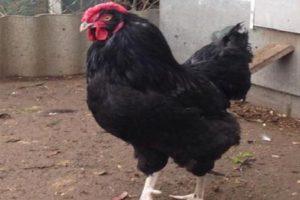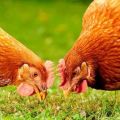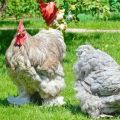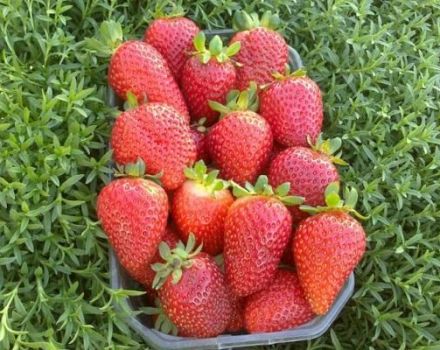Description and characteristics of the New Hampshire chicken breed, history and rules of maintenance
The New Hampshire chicken breed is considered quite popular. It is characterized by high parameters of productivity and belongs to the meat and egg direction. This is a universal breed that has shown itself only on the positive side over a century of existence. These chickens are characterized by high egg production parameters and excellent survival rate of young and adult birds. For bird breeding to be successful, they need to provide suitable conditions.
Breeding history
Breeding of these chickens began in 1910. The predecessor of the breed is the Rhode Island Red. The breeders sought to increase the activity of chickens, accelerate the ripening period, and improve the structure of eggs. For breeding the New Hampshire breed, no other species were specifically combined with the Rhode Island red. The breeders received these chickens by selection method. They have been developed over 20 years. As a result, in 1935, the breed received the standard of the American Poultry Association.
Description and characteristics of new gampshire
Before starting to breed chickens, it is recommended to familiarize yourself with the key characteristics of the breed.
Appearance
These birds are distinguished by their attractive appearance. They have a golden neck covered with black dots. There is a neat upright comb on the head. The tail bends in relation to the body at an angle of 45 degrees. Males have long tail feathers. The legs are medium in length. They are yellow in color. The beak is small and dark in color. The rib cage has a wide volume and a convex shape.
Chickens are distinguished by their nut color and beautiful bright feathers. The best representatives of the breed are used for breeding. Birds with faults are intended for slaughter. The most common breed faults include:
- inconsistency of the shape of the body with the standards of the species;
- large or small crest;
- black dots on the wings;
- different eye color;
- White skin;
- the appearance of a white coating on the lobe;
- fluff of gray-black color;
- yellowish beak.

Breed productivity
These chickens are usually bred for their eggs and meat. However, the emphasis is still on the weight of the bird. Farmers today are trying to find a balance between gaining weight and getting eggs. Chickens develop rapidly and gain weight. Therefore, they can be used as broilers.The mass of live birds varies. According to the standard, the female weighs 3-3.5 kilograms, the male 3.5-4.5 kilograms. The chicken is capable of laying 210 eggs annually. Moreover, they weigh 65-70 grams. With increasing weight, egg production parameters decrease.
Character traits
Chickens of this breed have a calm nature. They need walks, so it is not recommended to restrict the birds in movement. It is recommended to enclose the plot with an aviary, as the birds are curious and can damage the beds.
This breed does not show aggression towards other chickens. When incubating eggs, females can replace each other. At the same time, one whim is characteristic of the breed, namely, the unwillingness to rush in a certain place. Females love to make their own nests in those places where they see fit. The males of these birds are considered noble. They provide care for the females and protect the house even from strong competitors.

Incubation instinct
At the stage of selection, scientists have made a lot of efforts to preserve the maternal instinct. It was not possible to fully achieve such results. This breed has a weak maternal instinct. However, some chickens can still hatch eggs on their own.
Positive and negative sides
The advantages of birds include the following:
- good performance;
- unpretentiousness to food;
- ease of care.
At the same time, birds also have some disadvantages:
- susceptibility to cold;
- insufficiently developed maternal instinct in some birds.

Conditions of detention
This breed of birds is characterized by unpretentious care. At the same time, only high-quality care of birds will help to obtain high productivity.
Chicken coop requirements
One of the key advantages of breeding chickens is considered undemanding to the habitat. However, the following should be considered when setting up a house:
- It is advisable to make the floor in the hen house wooden - it should be covered with sawdust and hay. It is recommended to increase the thickness of the litter during the cool season.
- Before settling birds, the chicken coop should be treated with lime. Subsequently, sanitization is performed regularly.
- For preventive purposes, put a trough with sand and ash. Thanks to the use of such a mixture, it is possible to get rid of parasites.
- Perches are not recommended. Place the nests on the floor.

The coop should have good ventilation, however, due to the predisposition of birds to colds, it is recommended to avoid drafts.
Place for walking
Birds are mobile, so they should be provided with a full-fledged area for walking. Thanks to this, chickens will be able to find food in the form of small insects or grass. It is not necessary to make a high fence in the courtyard.
Feeders and drinkers
Birds definitely need drinkers and feeders. It is recommended to monitor the volume and quality of food and water at all times. With a large amount of garbage or water bloom, there is a risk of developing various pathologies. Chicks under 2 months old should be given extremely clean and boiled water. In addition, it is recommended to completely disinfect the feeders every week.
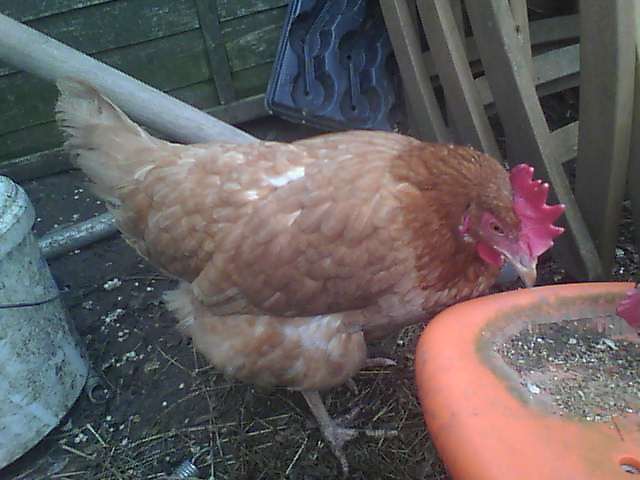
How to handle cold and heat
Chickens of this breed are considered to be very hardy. They are able to withstand adverse climatic conditions and temperature fluctuations. At the same time, too low a temperature regime can provoke frostbite on the scallops of birds. In such a situation, additional heating of the room is required. In winter, birds run well.
Molting and break of egg production
Molting is considered a completely natural process that is required for the health of birds. At the same time, the birds shed their old plumage and grow new ones. Chickens molt in late autumn and winter. This process provokes a reduction in daylight hours.During the period of plumage change, egg-laying can stop even in highly productive birds. That being said, don't worry.
Thanks to the creation of ideal conditions and a balanced diet, it will be possible to quickly survive the molt and restore the egg production parameters.
How to feed the birds?
Birds are unpretentious to the composition of the feed. However, the diet must be complete. Weight gain and egg production parameters directly depend on nutrition. The feed should contain fats, proteins and carbohydrates. The presence of vitamins and minerals is also important.

It is recommended to give adult birds cereals, herbs, corn, vegetables. You should also use yeast, fishmeal. To replenish calcium reserves, chickens should be given crushed eggshells. Particular attention should be paid to the diet of layers. It must contain vitamins and proteins. The finished compound feed is distinguished by these properties. Experienced farmers recommend adding sand to the feed, which improves digestive functions.
Breeding features of the breed
For bird breeding, it is recommended that you familiarize yourself with the key rules for incubating eggs. Chicken care is also important.
Incubation of eggs
Even if there is no hen, it is quite easy to hatch chicks. To do this, it is recommended to choose the best eggs from strong layers and place them in a special incubator. It is worth maintaining the optimal temperature and humidity in it. Adequate ventilation is essential. It is also worth turning the eggs in a timely manner. Your best bet is to buy an automatic device that can handle these tasks successfully. With high-quality material and observance of the incubation technique, hatchability of chickens will reach 100%.

Young growth care
In order for the chicks to develop normally, the chicken coop, feeders and drinkers will have to be cleaned and treated with disinfectants. Keep the house clean and warm. High humidity should also be avoided. Avoid overcrowding of birds. Otherwise, the young will suffer from nutritional deficiencies and lack of space.
In addition, in crowded conditions, the microclimate is disturbed, humidity rises. This becomes the reason for the development of pathologies and even the death of birds. Initially, the temperature in the house should be + 28-30 degrees. By 2 weeks of chicks, it is permissible to reduce it to + 20-22 degrees. Humidity parameters should be 65-75%.
Chicken diet
It is recommended to feed the chicks with chopped boiled eggs right after birth. Little by little, it is permissible to add vegetables and herbs to the diet. It is also helpful to give the chickens wheat bran. The main food element can be ready-made feed. Gradually it is worth introducing legumes and cereals. At 2 months, the chickens are given corn.

Planned herd replacement
In order to maintain stable egg production, it is recommended to perform a planned replacement of the livestock. For chickens of this breed, this period is 2 years from the date of the first laying. At 3 years old, their productivity decreases to 120-140 eggs. Then it stops completely.
The breed's tendency to disease
These birds usually suffer from colds. Warming the chicken coop will help to avoid this. To strengthen the immune system, it is worth introducing vitamin complexes into the menu. Also useful for birds and fish oil.
Chickens of the New Hampshire breed are considered very popular. They are characterized by good performance and do not require specific maintenance. Therefore, these birds are bred by many farmers.
